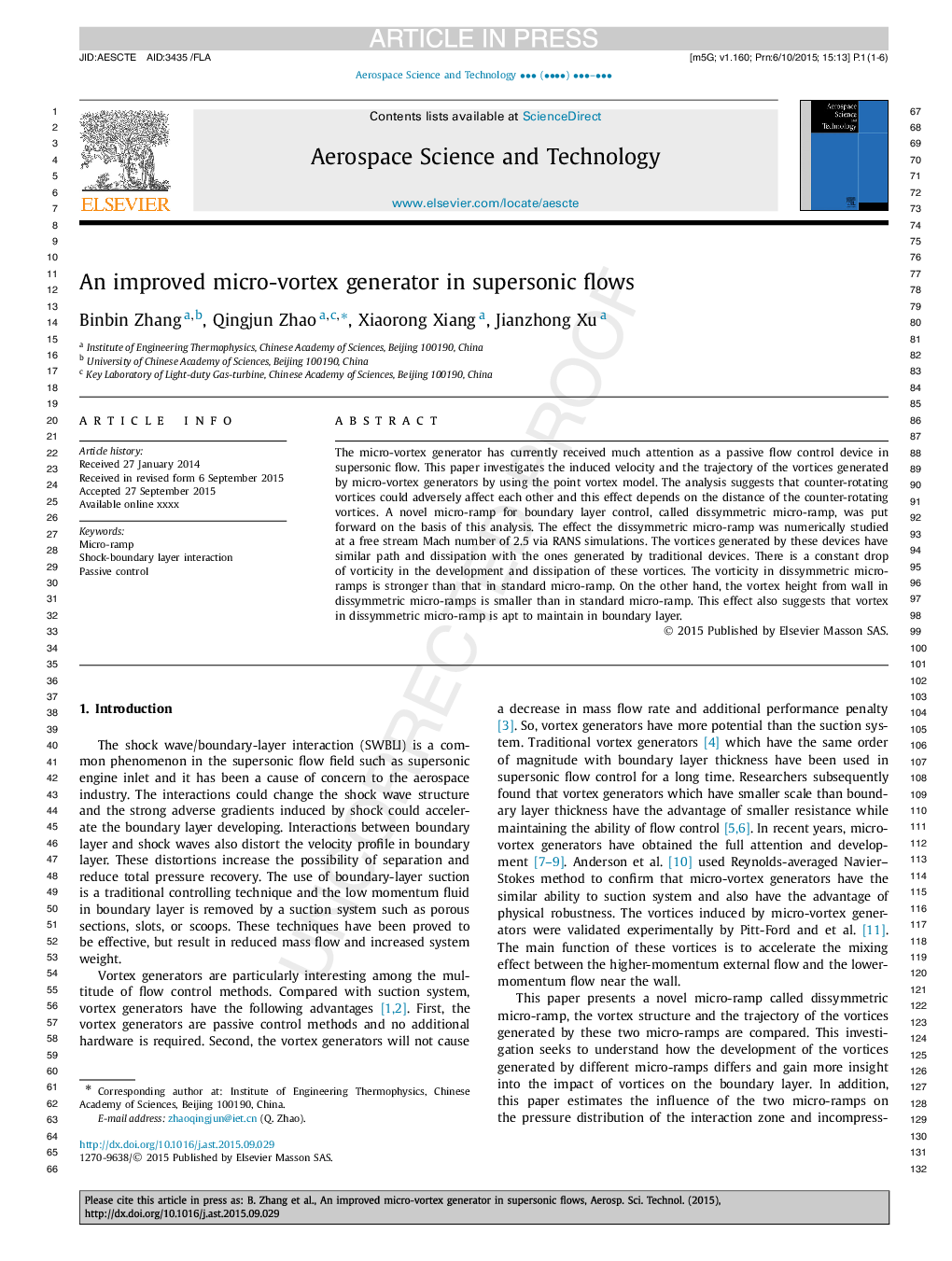| Article ID | Journal | Published Year | Pages | File Type |
|---|---|---|---|---|
| 8058716 | Aerospace Science and Technology | 2015 | 6 Pages |
Abstract
The micro-vortex generator has currently received much attention as a passive flow control device in supersonic flow. This paper investigates the induced velocity and the trajectory of the vortices generated by micro-vortex generators by using the point vortex model. The analysis suggests that counter-rotating vortices could adversely affect each other and this effect depends on the distance of the counter-rotating vortices. A novel micro-ramp for boundary layer control, called dissymmetric micro-ramp, was put forward on the basis of this analysis. The effect the dissymmetric micro-ramp was numerically studied at a free stream Mach number of 2.5 via RANS simulations. The vortices generated by these devices have similar path and dissipation with the ones generated by traditional devices. There is a constant drop of vorticity in the development and dissipation of these vortices. The vorticity in dissymmetric micro-ramps is stronger than that in standard micro-ramp. On the other hand, the vortex height from wall in dissymmetric micro-ramps is smaller than in standard micro-ramp. This effect also suggests that vortex in dissymmetric micro-ramp is apt to maintain in boundary layer.
Related Topics
Physical Sciences and Engineering
Engineering
Aerospace Engineering
Authors
Binbin Zhang, Qingjun Zhao, Xiaorong Xiang, Jianzhong Xu,
